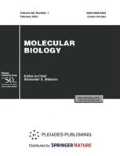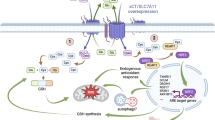Abstract
High metastatic ability and poor clinical outcome are the most known clinical features of the triple- negative breast tumors. Given that the tumor cells undergoing epithelial-mesenchymal transition (EMT) often gain malignant and invasive features, we have investigated the possibility of EMT reversal in triple-negative breast cancer cells by targeting the epigenetic-modifying enzymatic complexes named histone deacetylases (HDACs) and examined the possible mechanism underlying the HDACs-based inversion in model MDA-MB-231 cells. Cells were treated with a maximal tolerable 200 nM concentrations of classical HDACs inhibitor Trichostatin A (TSA) for 48 h and afterwards the invasiveness and immigration of the cells were evaluated in TransWell Invasion Scratch Wound Healing assays. Then, in treated and control cells, quantitative real time-PCRreacions were performed for assessing the gene expression of EMT biomarkers E-cadherin, Vimentin and transcriptional factor Slug. After TSA treatment, the invasion and migration properties MDAMB- 231 cells significantly decreased, gene expression of E-cadherin was significantly up-regulated, while the levels of Slug and Vimentin encoding mRNAs were suppressed. We conclude that inhibition of HDACs in triple- negative breast cancer cells may lead to inversion of EMT and the decrease of invasiveness by down-regulating the gene expression of Slug. Since EMT is known as a pre-metastatic process, triple-negative breast tumors, the EMT reversal effects of HDACs inhibition may reduce tumor cell metastasis.
Similar content being viewed by others
References
Brunßen A., Hübner J., Katalinic A., Noftz M.R., Waldmann A. 2016. In: Breast Cancer Epidemiology: Management of Breast Diseases. Springer, pp. 125–137.
Ferlay J., Héry C., Autier P., Sankaranarayanan R. 2010. In: Global Burden of Breast Cancer: Breast Cancer Epidemiology. Springer, pp. 1–19.
Kalluri R., Weinberg R.A. 2009. The basics of epithelial–mesenchymal transition. J. Clin. Invest. 119, 1420–1428.
Kalluri R., Neilson E.G. 2003. Epithelial–mesenchymal transition and its implications for fibrosis. J. Clin. Invest. 112, 1776–1784.
Zeisberg M., Neilson E.G. 2009. Biomarkers for epithelial–mesenchymal transitions. J. Clin. Invest. 119, 1429–1437.
Kovacs E.M., Ali R.G., McCormack A.J. 2002. E-cadherin homophilic ligation directly signals through Rac and phosphatidylinositol 3-kinase to regulate adhesive contacts. J. Biol. Chem. 277, 6708–6718.
Franke W.W., Schmid E., Osborn M., Weber K. 1978. Different intermediate-sized filaments distinguished by immunofluorescence microscopy. Proc. Natl. Acad. Sci. U. S. A. 75, 5034–5038.
Thiery J.P., Acloque H., Huang R.Y., Nieto M.A. 2009. Epithelial–mesenchymal transitions in development and disease. Cell. 139, 871–890.
Bolós V., Peinado H., Pérez-Moreno M.A., et al. 2003. The transcription factor Slug represses E-cadherin expression and induces epithelial to mesenchymal transitions: A comparison with Snail and E47 repressors. J. Cell Sci. 116, 499–511.
Vuoriluoto K., Haugen H., Kiviluoto S., et al. 2011. Vimentin regulates EMT induction by Slug and oncogenic H-Ras and migration by governing Axl expression in breast cancer. Oncogene. 30, 1436–1448.
Haberland M., Montgomery R.L., Olson E.N. 2009. The many roles of histone deacetylases in development and physiology: Implications for disease and therapy. Nat. Rev. Genet. 10, 32–42.
Zentner G.E., Henikoff S. 2013. Regulation of nucleosome dynamics by histone modifications. Nat. Struct. Mol. Biol. 20, 259–266.
Weichert W., Röske A., Gekeler V., et al. 2008. Histone deacetylases 1, 2 and 3 are highly expressed in prostate cancer and HDAC2 expression is associated with shorter PSA relapse time after radical prostatectomy. Br. J. Cancer. 98, 604–610.
Weichert W., Röske A., Niesporek S., et al. 2008. Class I histone deacetylase expression has independent prognostic impact in human colorectal cancer: Specific role of class I histone deacetylases in vitro and in vivo. Clin. Cancer Res. 14, 1669–1677.
Minamiya Y., Ono T., Saito H., et al. 2011. Expression of histone deacetylase 1 correlates with a poor prognosis in patients with adenocarcinoma of the lung. Lung Cancer. 74, 300–304.
Rikimaru T., Taketomi A., Yamashita Y.I., et al. 2007. Clinical significance of histone deacetylase 1 expression in patients with hepatocellular carcinoma. Oncology. 72, 69–74.
West A.C., Johnstone R.W. 2014. New and emerging HDAC inhibitors for cancer treatment. J. Clin. Invest. 124, 30–39.
Peinado H., Ballestar E., Esteller M., Cano A. 2004. Snail mediates E-cadherin repression by the recruitment of the Sin3A/histone deacetylase 1 (HDAC1)/HDAC2 complex. Mol. Cell. Biol. 24, 306–319.
Chomczynski P., Sacchi N. 1987. Single-step method of RNA isolation by acid guanidinium thiocyanate–phenol–chloroform extraction. Anal. Biochem. 162, 156–159.
Yoshikawa M., Hishikawa K., Marumo T., Fujita T. 2007. Inhibition of histone deacetylase activity suppreßses epithelial-to-mesenchymal transition induced by TGF-ß1 in human renal epithelial cells. J. Am. Soc. Nephrol. 18, 58–65.
Kaimori A., Potter J.J., Choti M., et al. 2010. Histone deacetylase inhibition suppresses the transforming growth factor β1-induced epithelial-to-mesenchymal transition in hepatocytes. Hepatology. 52, 1033–1045.
Chikina A., Alexandrova A.Y. 2014. The cellular mechanisms and regulation of metastasis formation. Mol. Biol. (Moscow). 48, 165–180.
Kong D., Ahmad A., Bao B, Li Y., Banerjee S., Sarkar F.H. 2012. Histone deacetylase inhibitors induce epithelial-to-mesenchymal transition in prostate cancer cells. PLoS One. 7, e45045.
Mason S.D., Joyce J.A. 2011. Proteolytic networks in cancer. Trends. Cell. Biol. 21, 228–237.
Wang X., Xu J., Wang H., et al. 2015. Trichostatin A, a histone deacetylase inhibitor, reverses epithelial–mesenchymal transition in colorectal cancer SW480 and prostate cancer PC3 cells. Biochem. Biophys. Res. Commun. 456, 320–326.
Li Y., Zhao Z., Xu C., et al. 2014. HMGA2 induces transcription factor Slug expression to promote epithelial-to-mesenchymal transition and contributes to colon cancer progression. Cancer Lett. (Amsterdam). 355, 130–140.
Liu Y.N., Abou-Kheir W., Yin J.J., et al. 2012. Critical and reciprocal regulation of KLF4 and SLUG in transforming growth factor β-initiated prostate cancer epithelial–mesenchymal transition. Mol. Cell. Biol. 32, 941–953.
Jing Y., Cui D., Guo W., et al. 2014. Activated androgen receptor promotes bladder cancer metastasis via Slug mediated epithelial-mesenchymal transition. Cancer Lett. (Amsterdam). 348, 135–145.
Shih J.Y., Yang P.C. 2011. The EMT regulator slug and lung carcinogenesis. Carcinogenesis. 32, 1299–1304.
Tang Y., Liang X., Zhu G., Zheng M., Yang J., Chen Y. 2010. Expression and importance of zinc-finger transcription factor Slug in adenoid cystic carcinoma of salivary gland. J. Oral Pathol. Med. 39, 775–780.
Hasan M.R., Sharma R., Saraya A., et al. 2013. Slug is a predictor of poor prognosis in esophageal squamous cell carcinoma patients. PLoS One. 8, e82846.
Author information
Authors and Affiliations
Corresponding author
Additional information
The text was submitted by the author(s) in English.
Rights and permissions
About this article
Cite this article
Rahimian, A., Barati, G., Mehrandish, R. et al. Inhibition of Histone Deacetylases Reverses Epithelial-Mesenchymal Transition in Triple-Negative Breast Cancer Cells through a Slug Mediated Mechanism. Mol Biol 52, 406–413 (2018). https://doi.org/10.1134/S0026893318030111
Received:
Accepted:
Published:
Issue Date:
DOI: https://doi.org/10.1134/S0026893318030111




